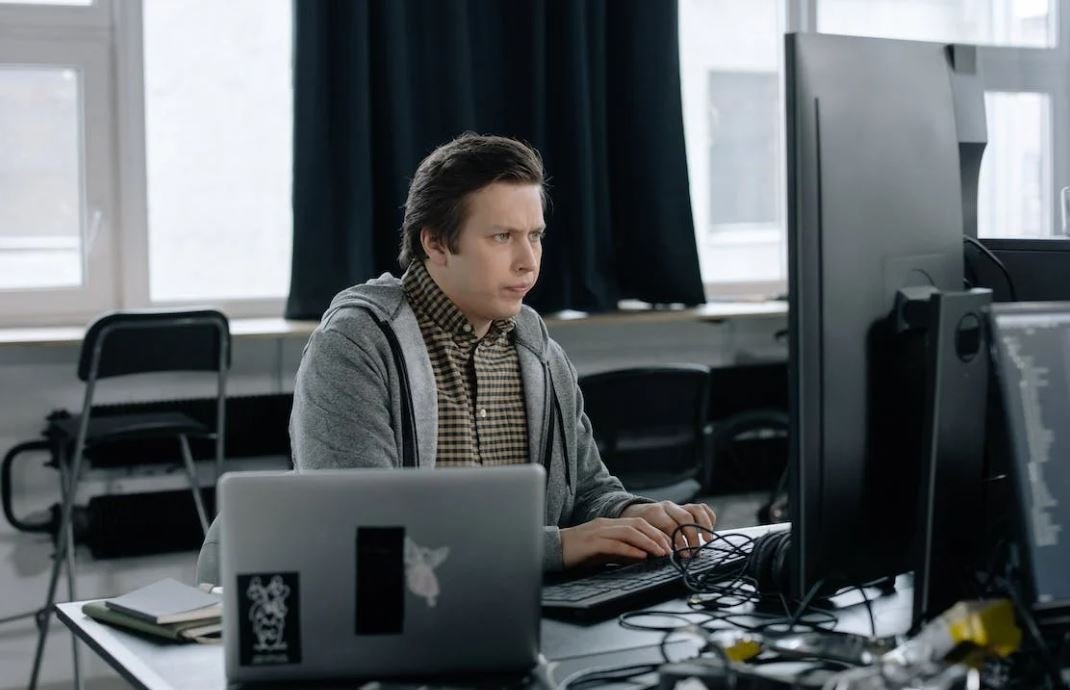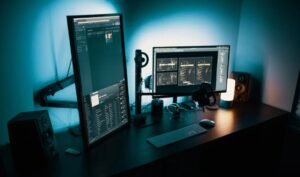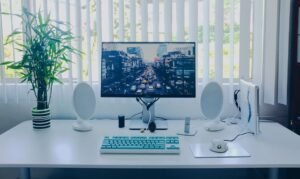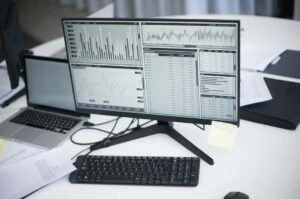AI Image Generator
Ever wondered how images are created? With the advancement of Artificial Intelligence (AI) technology, AI image generators are becoming powerful tools in the creative industry. These generators use machine learning algorithms to create realistic and stunning images that can be used in various applications.
Key Takeaways:
- AI image generators utilize machine learning algorithms to create realistic images.
- They have applications in various fields including design, art, and entertainment.
- These generators provide an efficient way to generate large volumes of unique and diverse images.
How AI Image Generators Work
AI image generators work by training on large datasets of existing images. They use deep neural networks to learn the patterns and characteristics of different objects, scenes, and styles. Once trained, these models can generate new images based on the learned knowledge. *AI image generators can even mimic the style of famous artists, enabling the creation of unique artworks.
Applications of AI Image Generators
AI image generators have numerous applications across various industries:
- In graphic design, these generators can assist in creating visuals for marketing materials, websites, and advertisements.
- In the entertainment industry, AI image generators can be used to generate realistic characters, scenery, and special effects for movies and video games.
- In art, AI image generators enable artists to explore new styles and experiment with visual representations.
Data and Analysis
| Benefit | Description |
|---|---|
| Time efficiency | AI image generators can rapidly produce large volumes of images, saving time for designers and artists. |
| Diversity | These generators can produce a wide range of unique and diverse images, expanding creative possibilities. |
| Quality | The use of deep neural networks ensures the generated images have high quality and realistic details. |
Challenges and Limitations
While AI image generators offer significant advantages, they do come with a few challenges:
- The need for large and diverse training datasets to achieve better results.
- Managing copyright and intellectual property issues when generating images based on existing artworks.
- Ensuring generated images align with ethical and moral standards, as AI may inadvertently produce biased or offensive content.
Current and Future Developments
The field of AI image generation is rapidly evolving, and ongoing research aims to overcome the limitations and further enhance the capabilities of these generators. *Recent advancements include the integration of AI image generators with virtual reality and augmented reality technologies, providing immersive visual experiences.
Market Trends
| Year | Market Size (in billions) |
|---|---|
| 2017 | 1.2 |
| 2018 | 1.8 |
| 2019 | 2.6 |
Conclusion
AI image generators have revolutionized the creative industry, providing designers and artists with powerful tools to create stunning visuals. These generators offer time efficiency, diverse outputs, and high-quality images. While challenges remain, ongoing research and developments are driving the field forward, expanding the possibilities of AI image generation.
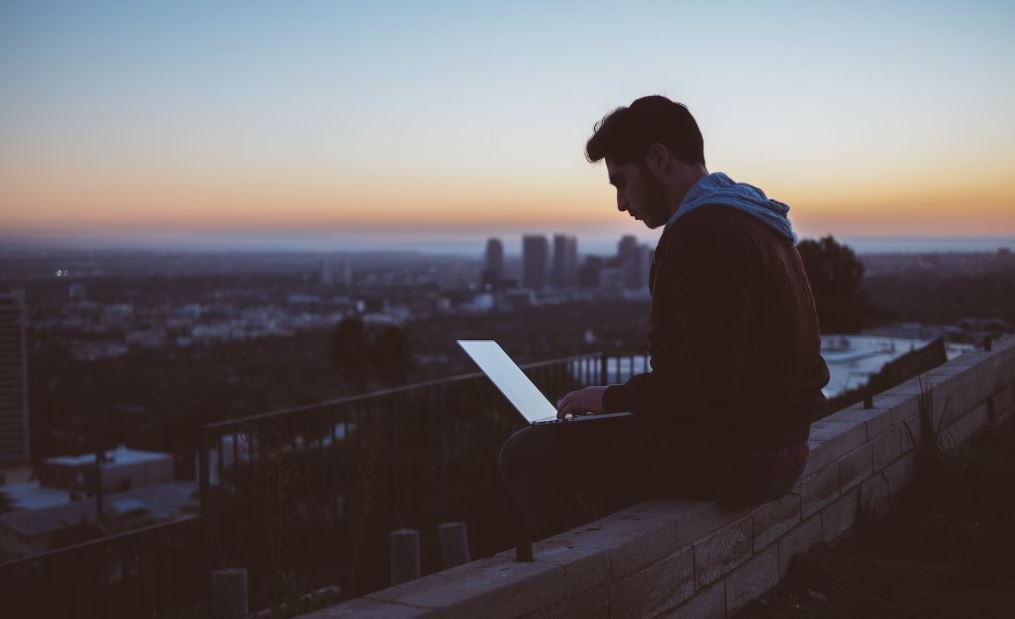
Common Misconceptions
Misconception 1: AI Image Generators Are Completely Accurate
One common misconception about AI image generators is that they always produce flawless and accurate images. In reality, while AI technology has made significant advancements, there is still a margin of error. These generators rely on patterns and image data provided during the training process, which means they may create images that are not entirely accurate or may contain certain inaccuracies.
- AI image generators may produce images with slightly distorted features.
- Generated images may lack the fine details and nuances found in human-created images.
- There is a chance that color accuracy in generated images may not match real-world colors accurately.
Misconception 2: AI Image Generators Are Always Creatively Independent
Another common misconception is that AI image generators work independently and exhibit creativity on their own. While AI algorithms can generate new and unique images, they do not possess creative consciousness or originality like human artists. These generators function based on the patterns and data they have learned and analyzed during the training process.
- AI image generators lack the ability to truly understand the meaning or context behind an image.
- The generated images are often a combination of existing patterns and features found in the training data.
- They do not possess the ability to express emotions or have subjective interpretations like human artists.
Misconception 3: AI Image Generators Replace the Need for Human Creativity
A common misconception is that AI image generators render human artists obsolete, leading to a decline in the need for human creativity. While AI technology can aid in the creative process, it does not replace the uniqueness and originality brought by human imagination and artistic expression.
- AI image generators lack the ability to convey deep emotions or personal experiences in their creations.
- Human artists bring a diverse range of perspectives, cultural influences, and personal stories to their work, which cannot be replicated by AI algorithms.
- The use of AI image generators often works best in collaboration with human artists, enhancing their creative output.
Misconception 4: AI Image Generators Are Easy to Use and Require No Expertise
Contrary to popular belief, AI image generators are not necessarily user-friendly and easy to operate without any prior expertise. While some platforms provide user-friendly interfaces, a deeper understanding of the underlying AI algorithms is often necessary to achieve the desired results.
- Adjusting parameters and settings require a certain level of technical knowledge and understanding.
- Artists still need to have a strong foundation in traditional artistic skills to make the best use of AI image generators.
- Understanding data preprocessing, selecting appropriate training datasets, and evaluating the generated output are all areas that require expertise.
Misconception 5: AI Image Generators Will Replace Human Artists
There is a misconception that AI image generators will replace the need for human artists in the future. While AI technology has enhanced creative capabilities, it is unlikely to entirely replace human artists. The human element, creativity, and the ability to evoke emotions through art are crucial aspects that AI image generators cannot fully replicate.
- Art created by human artists often carries a unique personal touch and deep emotional resonance.
- AI image generators lack the intuition and ability to interpret complex concepts and abstract ideas.
- Human artists bring cultural and historical value, as well as social and political commentary, to their creations.

AI Image Generator
AI image generators are advanced artificial intelligence systems that have the ability to create realistic and high-quality images. These generators have been trained on vast amounts of data and are capable of producing impressive and visually appealing visuals. In this article, we showcase ten fascinating illustrations that highlight the capabilities and impact of AI image generators. Each table provides insightful data or information related to this groundbreaking technology.
Impacts of AI Image Generators
This table showcases some of the remarkable impacts of AI image generators in various fields, from art to medicine. It demonstrates how this technology has revolutionized these industries by providing valuable tools and resources.
| Field | Impact |
|---|---|
| Art | AI-generated artwork is being sold for millions of dollars. |
| Design | AI-generated designs streamline the creation process. |
| Medicine | AI-generated medical images aid in diagnosis. |
| Marketing | AI-generated images help create eye-catching campaigns. |
Applications of AI Image Generators
This table explores the diverse applications of AI image generators in everyday life. From entertainment to virtual reality, these generators are transforming the way we interact with various technologies.
| Application | Use Case |
|---|---|
| Entertainment | AI generators can create lifelike characters for movies and games. |
| Virtual Reality | AI-generated environments enhance the immersive experience. |
| E-commerce | AI-generated product images boost online shopping experiences. |
| Social Media | AI generators assist in creating visually appealing posts. |
AI Image Generation Algorithms
This table provides a glimpse into the technical side of AI image generators. It showcases four popular algorithms used in the generation process, along with their respective techniques and features.
| Algorithm | Technique | Features |
|---|---|---|
| DeepArt | Neural Style Transfer | Applies the artistic style of one image to another. |
| DALL-E | Generative Adversarial Networks (GANs) | Creates images from textual descriptions. |
| PGGAN | Progressive Growing of GANs | Produces high-resolution and high-quality images. |
| PixelRNN | Recurrent Neural Networks | Generates images pixel by pixel. |
Ethical Considerations
This table delves into the ethical aspects surrounding AI image generators. It discusses potential concerns and ethical dilemmas that arise due to the use and misuse of this technology.
| Concern | Explanation |
|---|---|
| Intellectual Property | AI-generated images raise questions about ownership and copyright. |
| Identity Theft | AI-generated images can be used maliciously, impersonating real people. |
| Misinformation | AI generators can contribute to the spread of fake news and fabricated evidence. |
| Unconscious Bias | If trained on biased data, AI generators may perpetuate societal biases. |
Public Perception of AI Image Generators
This table presents data on the public’s perception of AI image generators. It reflects how individuals generally perceive this technology and acknowledges the opinions surrounding its usage.
| Opinion | Percentage |
|---|---|
| Excited and Optimistic | 45% |
| Cautiously Intrigued | 30% |
| Anxious and Skeptical | 20% |
| Uninterested or Unaware | 5% |
Artistic Collaboration
This table explores the concept of artistic collaboration between humans and AI image generators. It reveals the growing trend of artists utilizing AI as a creative tool rather than replaceable competition.
| Artistic Collaboration | Example |
|---|---|
| AI as an Assistant | An artist uses AI to generate initial sketches for inspiration. |
| AI as a Co-Creator | An artist and AI collaborate to create a unique masterpiece. |
| AI as the Sole Creator | An AI-generated artwork is presented as an artistic expression. |
Future Scope and Development
This table outlines the potential future developments and advancements in AI image generators. It showcases some exciting possibilities and areas where this technology may continue to evolve.
| Future Development | Description |
|---|---|
| Improved Realism | AI generators will produce even more realistic images. |
| Interactive Generation | Users will have active participation in the image generation process. |
| Enhanced Customization | AI generators will allow users to tailor images precisely to their needs. |
| Accessibility and Affordability | AI image generators will become more accessible and affordable for everyone. |
Investment in AI Image Generators
This table reflects the increasing investment in AI image generators worldwide. It illustrates the significant financial resources being dedicated to research and development in this field.
| Year | Global Investment (in billions of dollars) |
|---|---|
| 2018 | 3.5 |
| 2019 | 6.8 |
| 2020 | 10.2 |
| 2021 | 15.6 |
Conclusion
AI image generators have had a significant impact on numerous industries and continue to shape the way we create and perceive visuals. The displayed tables emphasize the multitude of applications, technical aspects, ethical considerations, and public perception tied to this technology. As AI image generators advance, their potential for artistic collaboration, future developments, and investment opportunities continue to grow. These tables provide insight into a fascinating world where the boundaries of creativity, technology, and human input merge seamlessly.
Frequently Asked Questions
How does the AI image generator work?
The AI image generator uses advanced machine learning algorithms to analyze a given input and generate unique images based on the provided specifications. It employs deep neural networks to understand patterns and features in the input data, allowing it to create visually appealing and realistic images.
What kind of specifications can I provide for the AI image generator?
You can provide various specifications such as the theme, style, color palette, resolution, image size, and other related parameters. The more specific and detailed your specifications are, the better the AI image generator can meet your requirements.
Can the AI image generator generate images from scratch?
No, the AI image generator does not generate images from scratch. It relies on pre-existing datasets, training data, or references to create new images. The generator takes inspiration from the provided input and generates images that incorporate similar features, styles, or characteristics.
How long does it take to generate an image?
The time required to generate an image can vary depending on the complexity of the specifications, the computational resources available, and the efficiency of the AI image generator. Generally, it can take anywhere from a few seconds to several minutes to create a high-quality image.
Are the generated images always unique?
Yes, the AI image generator aims to produce unique images based on the provided input. However, since it utilizes existing data and references, there might be a chance of similarity or resemblance to other images. The degree of uniqueness largely depends on the complexity and specificity of the specifications given.
Can I provide my own dataset for generating images?
In some cases, you may have the option to provide your own dataset to train the AI image generator. However, this depends on the specific implementation and capabilities of the image generator you are using. It is recommended to consult the documentation or support of the AI image generator to understand if such functionality is available.
How accurate are the generated images compared to the input specifications?
The accuracy of the generated images relies on the training data, the complexity of the specifications, and the capabilities of the AI image generator. While the generator tries to adhere to the provided specifications, the output may not always match them precisely. It is important to review and adjust the generated images based on your specific needs.
What are some potential use cases for the AI image generator?
The AI image generator can be utilized in various industries and domains. Some potential use cases include generating artwork, creating visual content for advertisements or marketing campaigns, designing virtual environments, generating synthetic images for training AI models, or assisting in the creation of digital media.
Can the AI image generator be used commercially?
Yes, in most cases, the AI image generator can be used commercially. However, it is essential to review and comply with the terms of service, licensing, and usage rights provided by the AI image generator provider. Ensure that you have the necessary rights and permissions for any commercial use of the generated images.
Are there any limitations or constraints of using the AI image generator?
While the AI image generator can be a powerful tool, there are some limitations and constraints to consider. These may include the quality and diversity of the available training data, computational resources required, time constraints for generating complex images, and potential copyright or intellectual property concerns. It is important to understand and work within these limitations while using the AI image generator.

